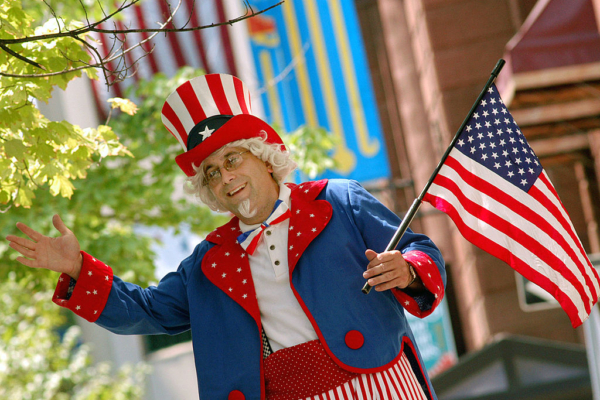July 4th is the “Independence Day” celebration for Americans, and it’s a great opportunity to talk about the iconic figure of “Uncle Sam.” Uncle Sam is typically portrayed as wearing a vest and formal attire, donning a tall hat with stars and stripes, tall and skinny, sporting a goatee, embodying a handsome, spirited image of an elderly gentleman.
The most famous depiction of Uncle Sam was created by illustrator James Montgomery Flagg in 1916 for “Leslie’s Weekly,” the year before the U.S. entered World War I. The stern-faced poster read, “What have you done to prepare?” After the U.S. joined the war, the poster’s message was changed to, “I want you for U.S. Army.”
During WWI, 4 million posters featuring Flagg’s Uncle Sam image were distributed, leaving a deep imprint of Uncle Sam in people’s minds. During WWII, Uncle Sam swapped his tall hat for a U.S. Army helmet. In factory posters, he urged workers to increase efficiency and warned against spreading rumors. Posters aimed at farmers instructed them to be ready for census takers who would inquire about crops, livestock, and tractors.
In the 21st century, there are no signs of Uncle Sam disappearing. The name still remains a common abbreviation for the U.S. government. But where did Uncle Sam originate?
According to an article by Rabbi Stuart Halpern, the Associate Director of Yeshiva University’s Strauss Center, in The Wall Street Journal, the legend of “Uncle Sam” traces back to a Boston businessman named Samuel Wilson. Wilson, a meat packer, was born in the outskirts of Boston in 1766.
During the War of 1812, Wilson supplied barrelled meat to the U.S. military marked with “U.S.” A soldier inquired about the letters and was told, “Samuel Wilson, Uncle Sam, is the army’s food supplier.”
Historian Alton Ketchum confirmed that Wilson was indeed a kindly man known for his knack for telling jokes. However, Navy Lieutenant Isaac Mayo wrote in his diary on March 24, 1810, that upon boarding the USS Hornet, he felt seasick, jokingly remarking that Uncle Sam would lose a sailor because of it.
There are numerous theories on the origin of the name Uncle Sam, and not all can be definitively traced.
The earliest political cartoon related to Uncle Sam was published in 1832 during a debate regarding President Andrew Jackson’s attack on the U.S. Bank. In this anonymous print titled “Uncle Sam in Distress,” the figure had a round face, cleanly shaven, dressed in a starred robe, and wore a liberty cap.
During the Civil War, Uncle Sam symbolized the Union. A lithograph from 1862, “Advance of the Volunteer Army at Dixie,” depicted an army composed of identical Uncle Sam characters marching confidently with clean-shaven faces and smiles towards victory. Around the same time, other artists began portraying Uncle Sam as a tall, skinny figure with a beard, similar to President Abraham Lincoln.
These historical snippets shed light on Uncle Sam. Nonetheless, as an iconic figure, Uncle Sam continues to provide comfort, a sense of duty, and the hope of sharing a good joke.

